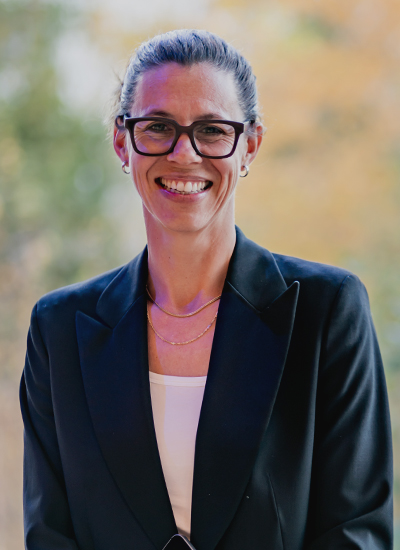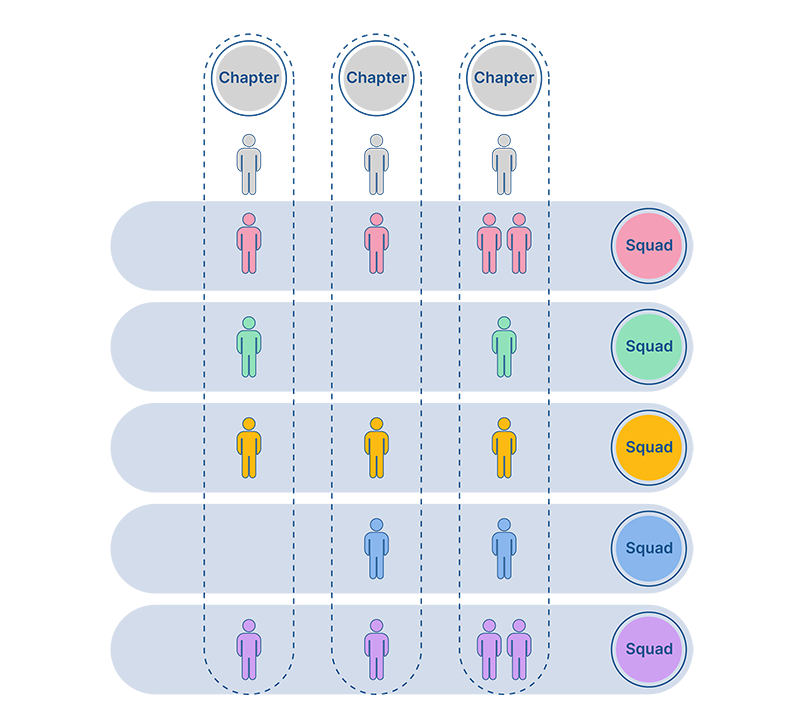
“Our aim is to deliver a great experience for end users” - Roche CPO


(Pic Courtesy: Marielle Beyer)
The Procurement team at the Swiss drugmaker Roche embarked on a transformation journey with the aim of tailoring the offerings and responding to business needs as quickly and flexibly as possible.
It was 10 a.m. in Basel, Switzerland, when Marielle Beyer, Chief Procurement Officer (CPO), received Beroe’s video call. The conversation began around what it means to be a Procurement professional working for one of the world’s largest pharmaceutical companies.
“My elevator pitch is we make sure that everyone who works for Roche has what they need to get their job done for the benefit of patients,” Marielle told Beroe in an exclusive interview.
The conversation then touched upon the Roche procurement team winning the Beroe Best-in-Class Gold award in the pharma industry.
“External recognition, in general, is a wonderful thing, and it is even more meaningful when our work is recognized during the COVID-19 pandemic. My team, like many other procurement teams out there, went out of our way to make sure that we would have supply security; we managed through all of the difficulties and the constantly changing environment,” Marielle said.
When asked for her reaction on winning the award at a time when Pfizer, Moderna, and AstraZeneca stole the show with their COVID-19 vaccines, she offered a thoughtful response.
“The gold medal that you awarded us reflects that we didn't just focus on crisis management; at the same time, we continued to transform and grow our function. We were moving into an agile organizational structure and addressed mindset and behaviors. We have made conscious investments in new areas, as well as new technologies, and we have done a lot of experimentation. Our hope is that this is a reflection of the totality and not just addressing the needs of the pandemic, although that in itself is an achievement of all of the teams”.
A Procurement team that manages to keep costs in check, optimize payment terms, and help in efficient inventory management would invariably contribute to bottom-line savings, which directly leads to shareholder value.
“I wouldn't say that Procurement’s role in creating shareholder value is part of the common conversation. However, the procurement team at Roche is building a reputation that goes well beyond the traditional value contribution.
“In fact, our Chief Financial Officer (CFO), Alan Hippe, mentions Procurement’s contribution in investor and analyst meetings. The contribution here refers to procurement savings, and also indicates our role in supporting a strong cash position through the positive impact of our accounts payable balance”.
Transformation: Agile Methodology and the Squad
Pharma companies such as Roche will have to continually invest in R&D to develop new life-saving medicines. In 2020, Roche invested 12.2 billion Swiss Francs ($13.4 billion) in R&D and posted sales of 58.3 billion Swiss francs.
Occasionally, pharma majors also lose patent protection for their established blockbuster drugs. For example, biosimilar launches in the U.S. and Europe had an impact on the sales of the company’s popular cancer drugs, Avastin and Herceptin.
“We have a call to action from our CEO to free up funds for R&D because we are an innovation- and science-based company, and that's where the magic happens. This is why we have an intrinsic motivation to transform our function to enable our business, especially R&D. One of the big transformations we did in the past was to move from a passionately decentralized Procurement Organization to a centralized group function by combining the divisional procurement functions of pharma and diagnostics,” Marielle said.
She also added that merely repeating “transformation” in meetings won’t really make much of a difference as business stakeholders may be confused as to whom they are talking to and what kind of impact the transformation has on them. She said over the years she has seen that merely implementing a technology without taking business needs into consideration can induce frustration, especially “when they can’t get the purchase orders (POs) right”.
The Procurement function — whose spend under management is about 15.5 billion Swiss francs— had to be realigned on moving from a decentralized to a centralized system.
“I have dramatically reduced my leadership team. I have three chapter leaders now, and a head of portfolio, performance and resource management,” she said.
With the aim of implementing Agile Principles, the Roche procurement team is divided into three main chapters:
Customer Excellence: Team members primarily interface with business stakeholders with the aim of driving an outstanding customer experience.
Delivery: The customer excellence team hands over the requirements to the delivery team, who then go out to the market to fulfil business needs.
Insights and Enablement: This team is in charge of delivering category insights and solutions.
The Resource and Performance management team’s job is to ensure that the three chapters adhere to the given strategy and measure them against a set of KPIs. This team also ensures that they match needs and capacity through portfolio and resource management.
“The three chapters are the home of our people. This is where you introduce an element of specialization. First, let us consider customer excellence. As this is a customer-facing role, a person should have excellent sales skills. In addition, a person in this role should be naturally curious and have the ability to collaborate with stakeholders.
“Second, there is hard-core procurement delivery. This is where we ensure that sourcing is done in a disciplined way, enabled by technology. We constantly strive for excellence in delivery, as this is the bread and butter of our function.
“Third, insights and enablement are really where we want to deliver category insights and solutions because we are now connecting to the outside; we are leveraging benchmarks and market trends, and this enables us to stay close to the supply side; for example, keeping track of supplier innovation. Here, we also look to shape solutions that can address a business challenge or an opportunity. We are going to take those solutions and push them to the business and vice versa; that is, through the customer excellence chapter, we will have an intake of requirements from the business and shape a team to deliver that outcome,” Marielle elaborated.
As a concept, “Agile Procurement” consists of small-scale cross-functional teamwork toward a series of agreed goals through several intermediate steps known as “sprints,” which are meant to eventually lead to an optimal outcome.
Marielle said her team works in an “agile manner” and operates in squads on a project-to-project basis; all the projects will be wrapped under portfolio management to enable easy monitoring.
Each squad has a specific mission that they are responsible for, and are accountable for delivering performance against that mission.
“We have never operated on the basis of demand and capacity. We only, let us say about three years ago, started to dramatically push towards a portfolio view so that at any given point in time, we would know what our portfolio of initiatives are and how it links to performance. The aim of this portfolio approach, the squad, is to offer flexibility in which we can leverage our pooled capacity and apply it to a certain business need. This will also help people to expand their horizons into different categories”.
According to Marielle, the Customer Excellence chapter personnel would start developing the squad based on the project requirement. They would then pull in experts in negotiation, contracting, or supplier relationship management from the “enablement group” with the aim of fulfilling business needs.
The results are beginning to show. Marielle said that her 900-member team (including those embedded in local commercial and distribution affiliates) enhanced its performance by going from an average of $650 million in annual savings prior to the transformation to delivering up to $1 billion in annual savings after the transformation.
Illustration of Chapters and Squads

Source: Roche
Digital Backbone
Roche recently implemented a procure-to-pay (P2P) system, aiming to cover 70 percent of transactions, which Marielle termed as the “digital backbone.” The other 30 percent of transactions are expected to be done via bolt-on solutions, which are typically new and specific requirements.
“The P2P system is the core. Just imagine the Swiss Alps with its peaks and troughs, which are basically bolt-on solutions that sit on top of our core. These could be a combination of robotic process automation (RPA) or AI in certain areas to enhance our performance. And we look to startups who could offer specific solutions. ”
She then explained managed services, which complements the procurement function in the area of contract management, where the team has partnered with third-party service providers to work on non-complex contracting work such as NDAs.
“I want to find ways to deliver a great experience for our end users, but also for our procurement professionals,” she said.
Supplier Day: Tap into Innovation
At the time of our conversation, Roche was in the process of holding a “Supplier Day” and had invited several startups to present their solution.
“We have invited start-ups to pitch us on business challenges that we are currently facing. The thing with startups is that you can generate some excitement, but then you need to support them through the ability to scale up their product for it to be fit for the purpose.
“We see pockets in our operations where startups are used and engaged, however, the majority of our supply base— consisting of some 60,000 suppliers— is what you would label as traditional suppliers,” she said.
Public-Facing Role
When asked whether CPOs should play a more public-facing role like CFOs and COOs, Marielle said she was of the opinion that both were feasible options.
“Let me turn this around. I think the role of leadership has to change. Procurement can no longer be a top-down control function. You need to find ways to harness the power of your organization and create the right connections -- be an architect, be a catalyst, be a coach, which is what we want to be. In addition, there is a need for a strong vision of where your function has to be. If that has to be outward facing, then that's the role we have to play. On the contrary, if it is not the right approach, then that's also good,” she concluded.
Related Insights:
View All
Get more stories like this
Subscirbe for more news,updates and insights from Beroe






